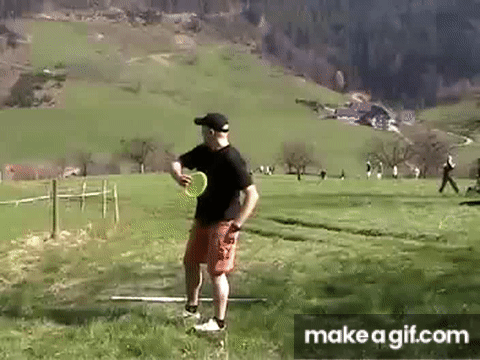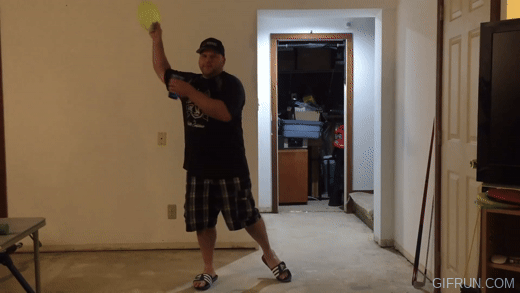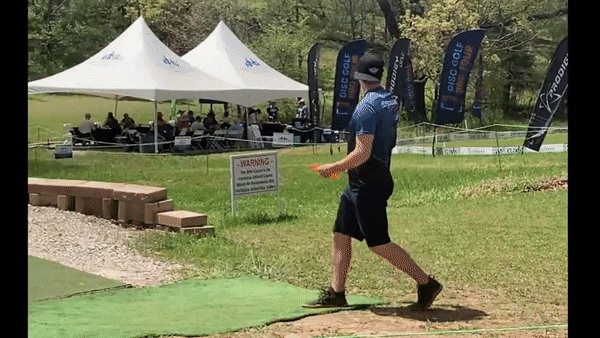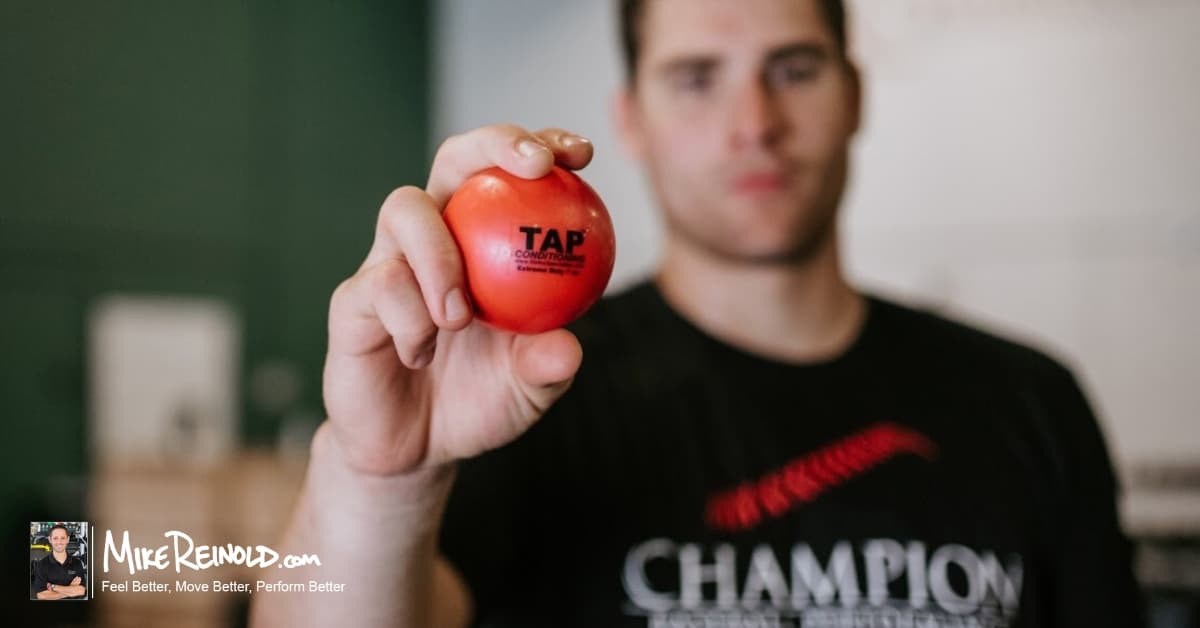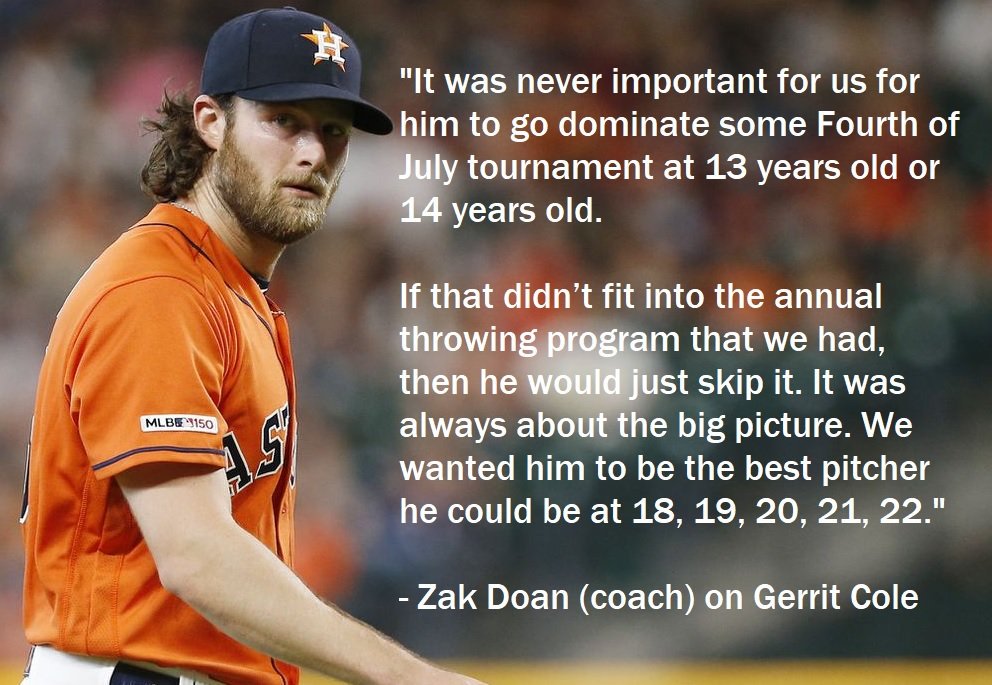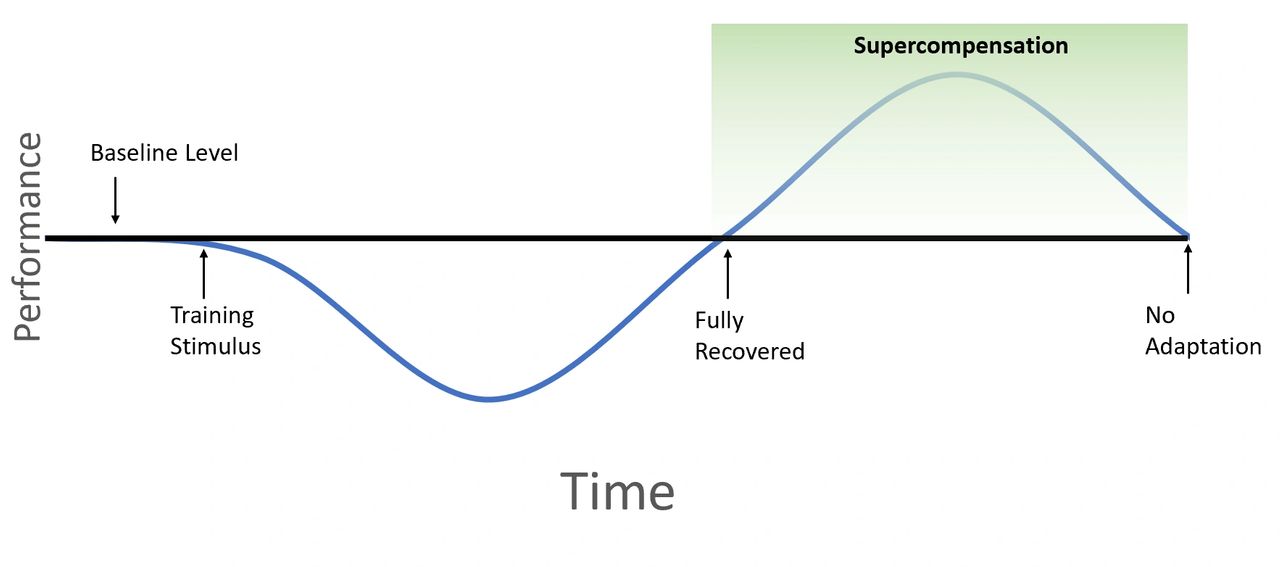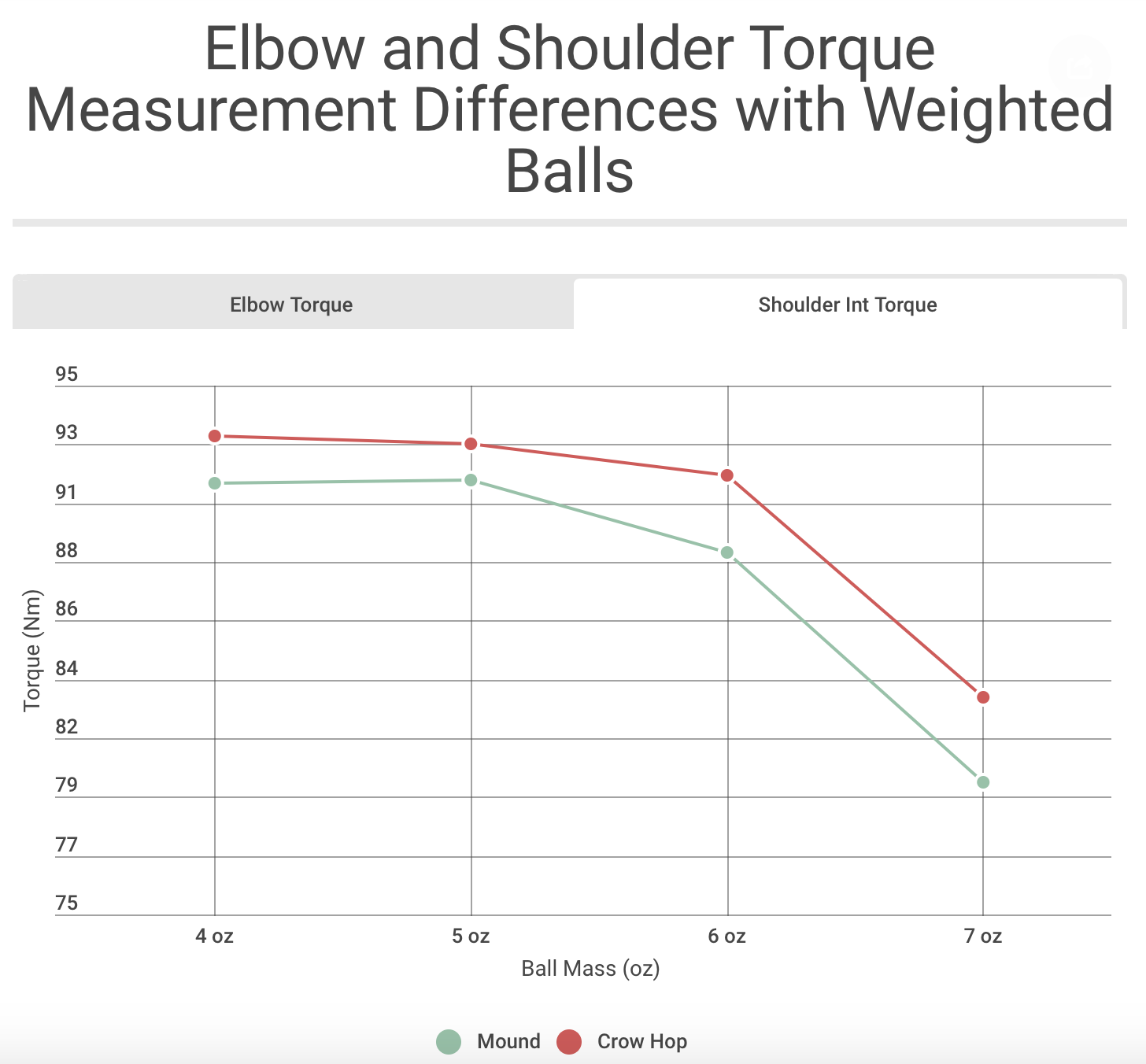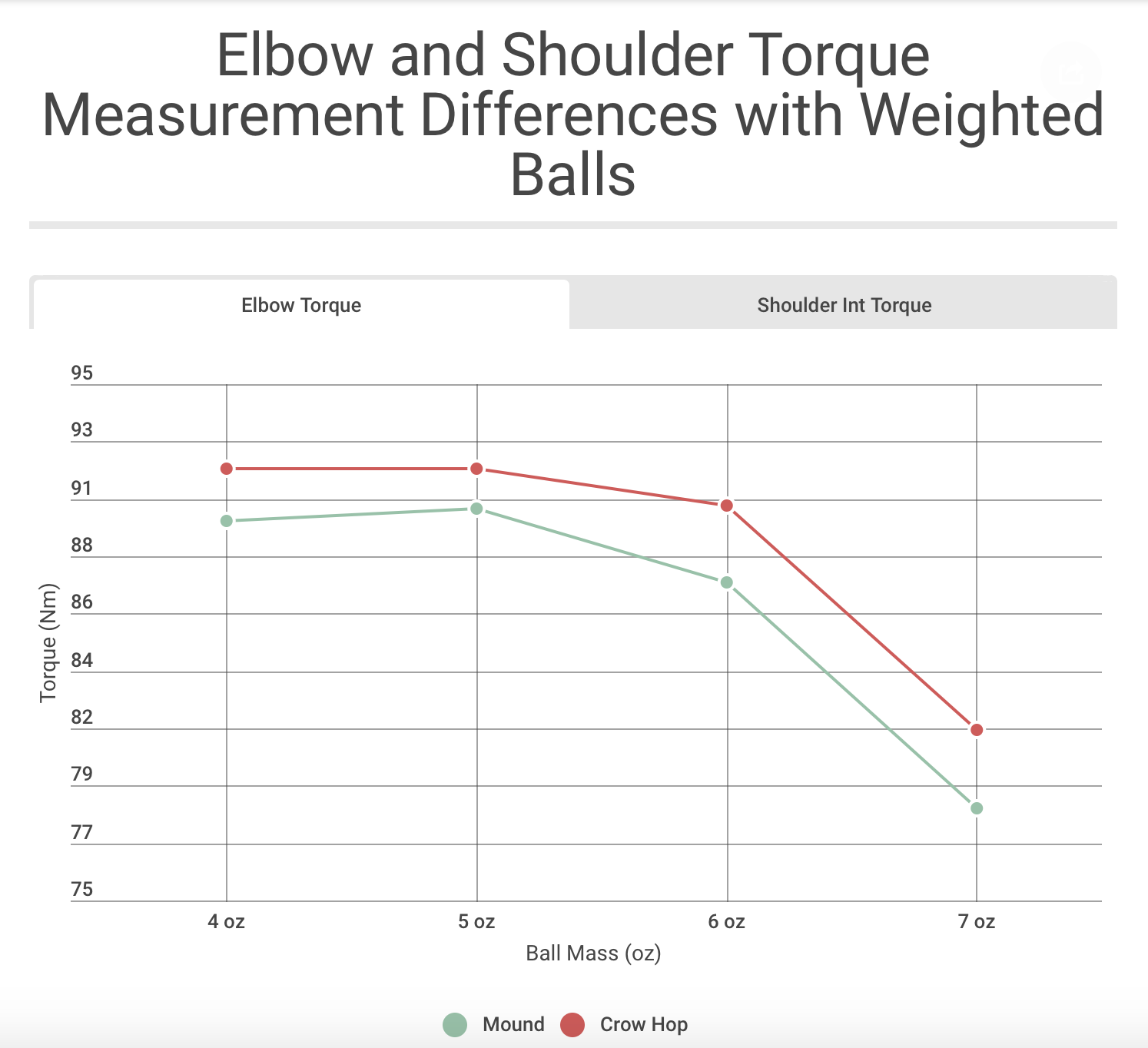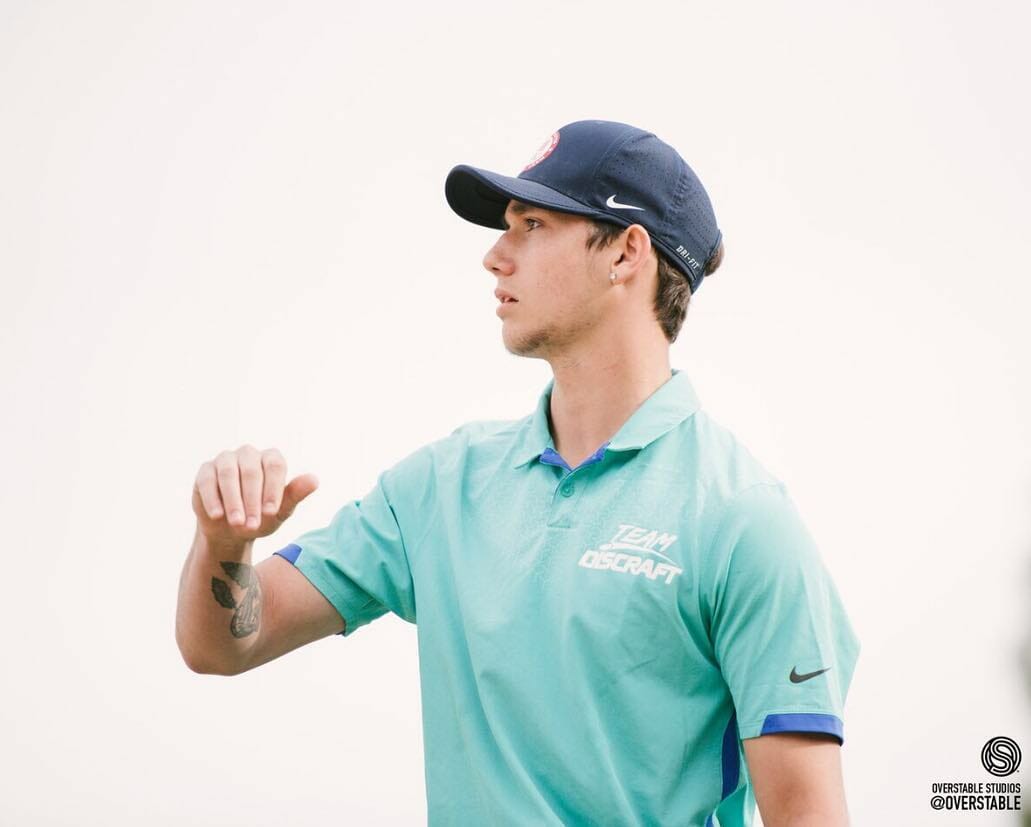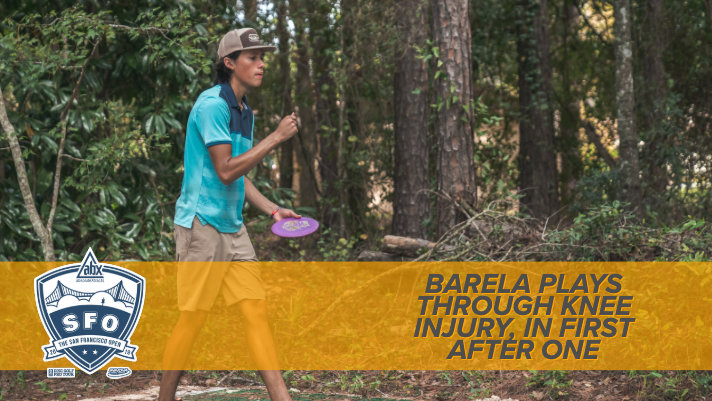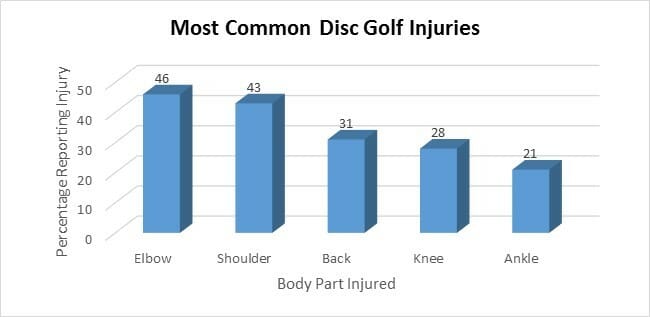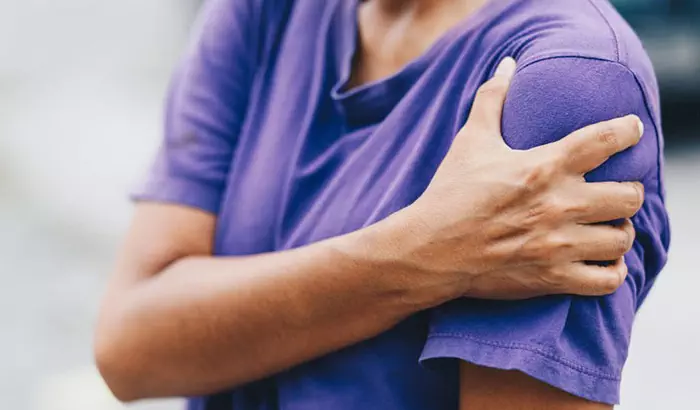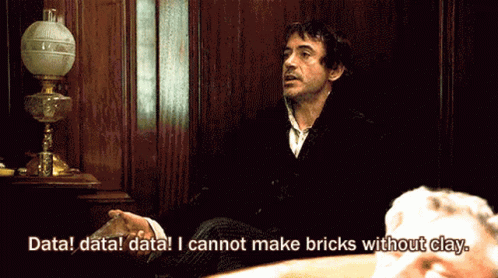On the topic of safety I see a lot of people dry firing practice swings like they're trying to push 500. Probably not good for the body.
I've also seen people do this. I tried it once and never did it again. Basically if you're not ejecting the disc the force can only find its way back into the ground and your body (joints go owie!)
I'm still really fond of this one. You can get a good medium speed swing and feel the weight/resistance if you follow through. Sometimes I do it with two putters stacked flight plate to flight plate for more weight & air resistance in the deep dish. I think this was an important part of developing my arm kinetics and it definitely affects my warmup & first drives.
Shawn Clement had an older Finish Position video similar to the one below. He said that the Finish Position is the Tuning Fork of Your Form. I thought that was a really profound statement and it really helped me fine tune my form. The finish position is like watching the ripples from a stone...

www.dgcoursereview.com
Not saying you should or should not, but I've probably thrown thousands of throws with up to 100% power with no disc, it's been a huge part of developing my technique and one of my best sources of practice during the long Nordic winter.
I have even included it in my preshot routine sometimes.
If I'm being honest I know that when I do it a lot I tend to feel like crap and get injured more easily, so I try to not overdo it. But I also doubt I'd throw 350' if I had never done it, much less low to mid 400s.
Perhaps "everything in moderation" if you allow complete follow through?
Pitching studies have shown that lighter weight training improves velocity with less injury. Thinking back to when I did my Indoor Viscous practice a few years ago, right after that I was probably throwing my furthest. I see benefits to throwing different weights, lighter and heavier. Heavier effortless tosses probably better for beginners learning the correct kinetic sequence, and then later on lighter weights to increase velocity. Everything should be done in moderation of course.
Pitch velocity has become an increasingly popular metric by which pitchers are graded and compared. Training programs that utilize weighted balls have been effective in increasing velocity but at the cost of an increased injury risk. No studies have evaluated ...

www.ncbi.nlm.nih.gov
A 15-week pitching training program with lighter baseballs significantly improved pitching velocity without causing any injuries, specifically to the shoulder or elbow. Lighter baseballs should be considered as an alternative to weighted baseballs when attempting to increase a pitcher's velocity."
Weighted baseball programs have become popular to increase pitching velocity. But, the popularity has grown faster than our understanding of the science.

mikereinold.com
Quite simply, we know that the more external rotation you have the more velocity you have. We also know this increases the stress on your shoulder and elbow.
This is the part that sounds like rocket science but is actually common sense. It's physics. More layback allows the arm to throw harder, which puts more stress on the arm.
Weighted balls increase layback, which increases velocity, which both increase stress, which all increase injury rates.
OK, I get it, you still want to use weighted balls. They seem magical on the internet.
I'm completely fine with that. I use them myself with many of the players we work with, but not all of them.
As we continue to learn more, I think we realize that weighted balls have a very small place in our velocity development programs for the right person at the right time.
They should not be performed blindly on a big group of people like we are seeing being implemented for youth, high school, and college teams across the country.
This is silly.
As with everything else in life, it's all about the dosage. Ever hear the phrase "there's too much of a good thing?"
We are really overdosing on weighted balls."
See part one of this series here.

www.parksperformance.net
"
Weighted Baseballs are More Stressful on the Arm
For starters, if you're in the anti-weighted baseball group make sure your son does not pick up anything that does not weigh exactly five ounces. Throwing things like tennis balls, softballs, dodgeballs, rocks, whiffle balls, snowballs, and footballs could seriously put them at risk for getting hurt.
(Hint: Throwing balls that do not weigh exactly five ounces is perfectly okay.)
Now that we got that out of the way, let's talk about what classifies as a "weighted baseball." For one, saying "weighted baseballs" are bad is meaningless because any ball that has some sort of weight is a weighted baseball. How did we figure out that the five ounce one was the safest? Why does adding (overload) or subtracting (underload) an ounce from the ball all of a sudden make it dangerous? For all we know, the five ounce one seems to do the most harm…
Stress is NOT bad. We need stress in order to create specific adaptations that supercede our previous skill level.
The overarching argument against weighted baseballs is some form of they are more stressful and thus more dangerous to throw with. Before we get into that argument, I think we need to understand the role of stress. Stress is NOT bad. In fact,
we need stress in order to create specific adaptations that supercede our previous skill level. This process is called
supercompensation and was made popular through
Hans Seyle's General Adaptation Syndrome. When a system is placed under conditions of stress, the fitness level initially decreases. Supercompensation happens when the system has been given adequate rest to recover and develop a new fitness level that
supersedes the previous baseline. These positive physiological adaptations are what we are chasing as coaches and athletes. If we are not stressing the system, we are not able to create these adaptations and improve. Thus, understanding the
dosage, timing, and method of applying stress becomes the better question (which is a really good one, by the way).
The General Adaptation Syndrome,
image source
While we now understand that stress isn't necessarily bad, it is worth looking at comparisons of stress levels between different weighted baseballs. Driveline Baseball has done research that compares the peak shoulder internal rotation torques and medial elbow torques for baseballs 4 through 7 ounces. Their findings are below:
see full article for more information,
image source
What you'll notice is the
peak torque levels actually significantly decrease when the ball weight increases. This is contrary to what most people think about overload implements – even though we know a lot of NFL quarterbacks have had success slinging 14-16 ounce footballs without needing elbow surgery. If anything, the baseballs that might be "more stressful" to the system are the underload baseballs.
At the same time, using a cookie cutter weighted baseball program is not your fast track to adding 5-10 mph
(if anyone offers you a program and guarantees you x mph, don't walk away – run). Using weighted baseballs
does not mean you are automatically going to gain velocity.
Weighted baseballs are nothing more than a tool that you should have in your toolbox as a coach. Some people might really benefit from them and others may want nothing to deal with them. As a coach, you need to be able to
assess each athlete and
find the lowest hanging fruit before you dive into an aggressive weighted baseball program. The best programs are the ones that do a lot more than the
run 'n gun weighted ball fun stuff that you see on Twitter (i.e. proper warm ups, recovery, building throwing capacity, developing a quality strength program, hydration, nutrition, etc.).
Weighted baseballs are not bad. They are a tool.
To sum it up:
Weighted baseballs are not bad. They are a tool. If used correctly, they can be a great way to build high level movements that improve velocity, command, and arm health (
see research for more on this). If you use them like an idiot (i.e.
see study where kids players were making max effort throws with two pound balls), you're probably not going to get better."

